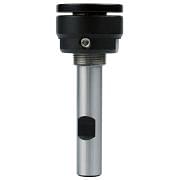Chucks DIN 2080 and cylindrical
DIN 2080 and Cylindrical Chucks: Precision and Reliability in Mechanical Machining
In the world of mechanical machining, precision and reliability of tools are essential to guarantee high quality results. Spindles, especially those complying with DIN 2080 and cylindrical spindles, are essential tools for clamping cutting tools in machine tools.
What are DIN 2080 and Cylindrical Spindles?
Spindles are mechanical devices used to clamp and hold cutting tools, such as milling cutters, reamers or drill bits, in position during machining.
DIN 2080 spindles: This type of spindle is designed according to DIN 2080, a German technical specification that defines the dimensions, shape and tolerances of conical spindles used mainly in machine tools such as milling and boring machines. DIN 2080 ensures that spindles produced according to this specification can be interchangeable between different machines, offering great flexibility and standardisation in the industrial context.
Cylindrical spindles: Cylindrical spindles, as the name suggests, have a cylindrical-shaped body. They are widely used in lathes and other machine tools for clamping tools with cylindrical shanks. These chucks offer excellent stability and are ideal for machining operations that require precise tool alignment.
Advantages of DIN 2080 and Cylindrical Chucks
- Standardisation: DIN 2080 spindles are standardised, which means they can be used on different machines without the need for adaptation.
- Precision: Both types of spindles offer a secure and precise grip, which is essential to guarantee the quality of machining.
- Reliability: Thanks to their robust construction, these spindles offer excellent durability and reliability even under harsh working conditions.
Use of DIN 2080 and Cylindrical Chucks in Mechanical Machining
DIN 2080 and cylindrical spindles are used in a variety of industrial applications, always guaranteeing secure tool gripping and thus precise, quality machining. Let's take a look at some of the main applications:
Milling with DIN 2080 spindles
Milling is a machining process in which a rotating tool removes material from a workpiece to obtain the desired shape. DIN 2080 spindles are widely used in milling machines to clamp conical milling cutters. Thanks to the DIN 2080 standardisation, these chucks ensure that the milling cutters are mounted precisely, minimising vibration and ensuring uniform machining.
How to use:
Installation: Ensure the chuck is clean and free of debris before installation.
Alignment: Insert the cutter into the spindle carefully to ensure correct alignment.
Tightening: Use the correct tightening torque to secure the tool, avoiding damage to the spindle or cutter.
Turning with Cylindrical Spindles
Turning is a machining process in which a workpiece rotates on an axis while a cutting tool removes material to create a cylindrical shape. Cylindrical spindles are commonly used in lathes to clamp tools with a cylindrical shank. The stability offered by cylindrical chucks is crucial for maintaining precision during the turning process.
How to use:
Preparation: Check that the tool shank is compatible with the chuck and free of defects.
Fastening: Insert the tool into the spindle and tighten it using the appropriate tooling.
Check: Check that the tool is securely clamped and correctly aligned before starting machining.
DIN 2080 Precision Chucks
For machining requiring extremely tight tolerances, precision DIN 2080 spindles are the ideal choice. These spindles are designed to maintain a high level of precision even during complex machining operations, minimising the risk of misalignment or imperfections.
How to use:
Checking Specifications: Ensure that the spindle you choose is suitable for the level of precision required for the machining operation.
Maintenance: Keep the spindle and tool clean to avoid contamination that could affect accuracy.
Calibration: Check the spindle calibration periodically to ensure optimum performance.
Mechanical Machining with Cylindrical Spindles
Cylindrical spindles are versatile and can be used in a wide range of machining operations, from turning to milling. Their ability to hold a tool in place with precise alignment makes them ideal for applications requiring accurate and repeatable machining.
How to use:
Tool Selection: Select the right tool for the specific machining operation and make sure it is compatible with the spindle.
Installation: Mount the tool in the spindle and tighten it securely, making sure there is no unwanted movement.
Monitoring: During machining, monitor tool wear and spindle tightening to maintain work quality.
Advantages of Using DIN 2080 and Cylindrical Chucks
The use of DIN 2080 and cylindrical spindles in machine shops offers numerous advantages:
- High Standardisation: DIN 2080 spindles are standardised, ensuring interchangeability and flexibility in use on different machine tools.
- Precision and Stability: Both DIN 2080 spindles and cylindrical spindles offer high tool stability, which is essential for precise, high-quality machining.
- Durability: These spindles are built to last, resisting wear and maintaining their performance even under harsh working conditions.
- Versatility: The ability to use different cutting tools makes these spindles extremely versatile, suitable for a wide range of mechanical applications.
Frequently Asked Questions
1. What is the main difference between a cylindrical chuck and a conical chuck?
The main difference lies in the shape of the tool shank. A cylindrical chuck is designed for tools with a cylindrical shank, whereas a conical chuck (such as DIN 2080) is designed for tools with a conical shank.
2. How can I keep my chucks in good condition?
It is important to keep your spindles clean and free of debris. In addition, regular lubrication and calibration checks help to maintain optimum performance.
3. Are cylindrical spindles suitable for high-speed machining?
Yes, cylindrical spindles offer a secure grip even at high speeds, ensuring stable and precise machining. However, it is important to ensure that the tool is correctly balanced and the spindle is properly tightened to avoid vibration or misalignment during operation.
DIN 2080 and cylindrical spindles are essential tools for ensuring precision and reliability in machining operations. Their ability to hold the tool firmly in position, combined with the standardisation offered by DIN 2080, makes them an ideal choice for workshops looking to optimise their operations.
-
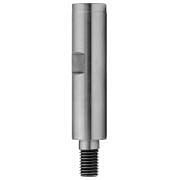
-
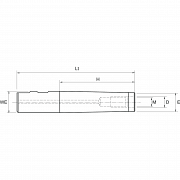
-
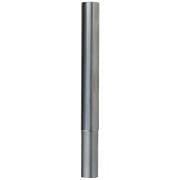
C3180
Threaded coupling carbide chucks with cylindrical and reduced taper TUKOYfrom €365.00 to €735.00 -
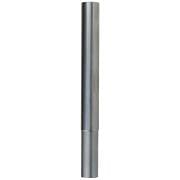
-
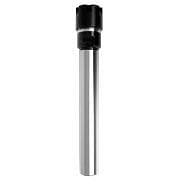
-
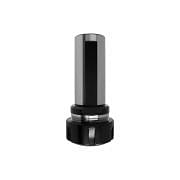
-
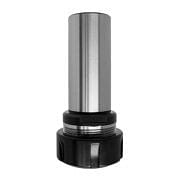
-
